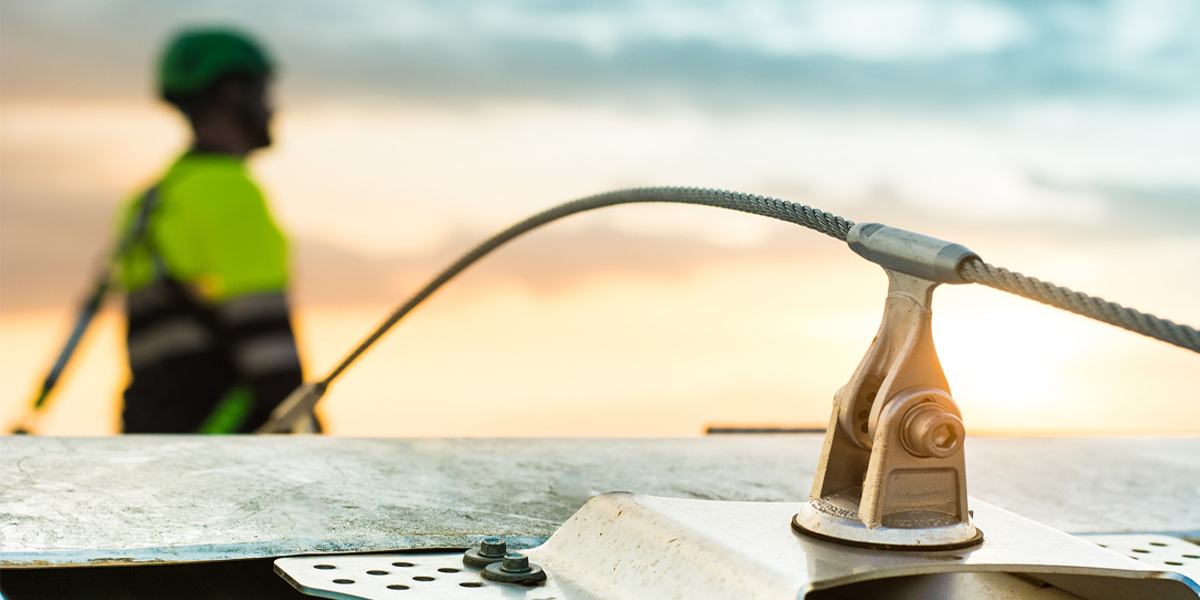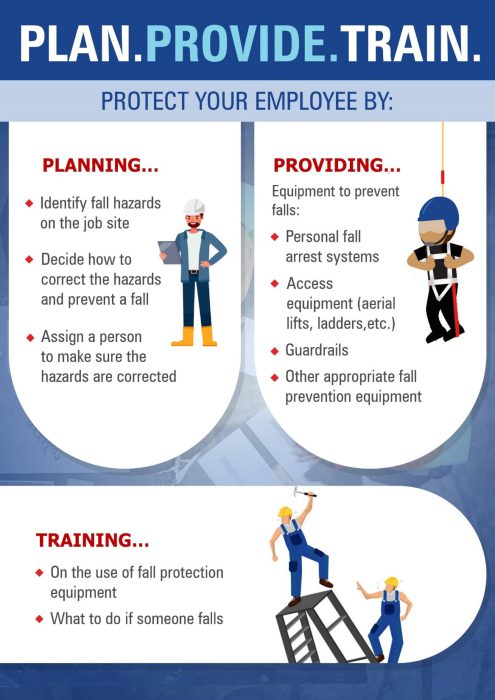Spotlight on fall protection safety – 7 pointers

One of the world’s most helpless sensations is falling. When the platform you relied on gives way beneath you and you tumble to the ground, it is indeed, terrible.
Due to the nature of the work, several sectors, like oil and gas and construction, have a high danger of falling from heights. Falls are risky and can result in expensive injuries or even death.
- According to a 2017 National Census of Fatal Occupational Injuries report from the Bureau of Labour Statistics (BLS), fatal falls accounted for 17% of all worker fatalities, which was a record high in the 26-year history of the CFOI.
Most deaths from trips, slips, and falls occurred when people fell from one level to another. There is little doubt that action needs to be taken to reduce these tragedies.
- Analysis or recognition of hazards is the first step in any fall protection program
Programs to prevent falls shouldn’t be implemented carelessly. To identify potential fall hazards, a detailed examination must be conducted. In the workplace, a few of the more typical ones are:
- Floor gaps and pits
- Openings in walls
- Shelving systems
- Portable storage tanks
- Industrial production sites
- Tanker trucks
- Stopping the fall
You’re ready to set up your three lines of defence for fall protection or fall hazard control after doing an exhaustive fall hazard study.
Eliminating the risk of falling entails both re-engineering the location and restricting staff access.
Fall prevention measures include using proper guardrails on platforms and steps to stop a fall. Guardrails need to include evenly spaced posts, top rails, mid-rails, and a typical toe board to be functional. Fences and barricades are additional methods for preventing falls.
Personal fall restraint — A personal fall restraint is different from a personal fall arrest system in that the lanyard is fixed in length and keeps the user from stepping into the fall hazard area. However, in other circumstances, it can limit a worker’s mobility.
Employers do everything they can to prevent falls, but they still do occur. Controlling a worker’s fall should always come first.
- Preventing the fall
A personal fall arrest system (PFAS) must be utilised when tasks necessitate prolonged worker mobility or will place the worker close to a fall hazard. This is crucial when workers must use ladders to climb or descend, or when they are working close to vulnerable sides and edges.
Although a PFAS and a personal fall restraint system may both feature body harnesses and anchorage points, other parts may be different.
A PFAS, for instance, would call for the use of a self-retracting lanyard (SRL), or in some circumstances, an SRL that is rated for innovative uses.
However, you can’t just deliver the tools to your staff and expect them to utilise them correctly. You must teach them how to utilise it as well.

- Teaching staff how to use basic fall protection techniques
Workers who are exposed to fall hazards must receive training from their employers.
- The instruction should cover:
- Fall risks related to the location and the task being done
- Techniques for reducing fall hazards
- usage of fall prevention, positioning, and arrest technologies for yourself
The OSHA requirements for fall protection in their sector
The correct donning and doffing of the equipment must be covered in the employee training programme. Although worker education is crucial, the employer also has other obligations.
- Inspections mandated by the employer
It’s important to keep an eye out for any potential problems at work. fall dangers This should be carried out consistently. There may be an increase in dangers when the workplace evolves.
The condition of any existing fall hazard controls must also be checked. For PFA and PFR systems, this comprises fences, guardrails, coverings, grates, and permanent anchorage points.
PFA and PFR equipment inspections need to be done on a regular basis by qualified, trained individuals. The suggested timetable is monthly. However, before donning or utilising the equipment and all components, each worker using it should do a self-inspection. They should also be taught in inspection techniques.
The final step in fall protection is to develop a written rescue plan.
- Drafted fall rescue strategy
It is also advised that companies create and record a rescue strategy. The strategy must be shared with any employee who might help in a rescue. The staff should be trained on the plan as well. not just tell them about it.
Among the matters the strategy should address are:
- Keeping the suspension period to a maximum of 15 minutes
- Planning for a worker who is unconscious or hurt and unable to help themselves or others in need of rescue
- Ensuring that all rescue tools are on hand and simple to use
- Ensuring that someone is assigned to notify emergency services each time a fall happens
Keep in mind that time is of the importance if you fall. Rescue operations should be as promptly as possible to prevent further problems.
Make sure your team is familiar with the elements of both personal fall arrest systems (PFAS) and personal fall restraint systems (PFRS) (PFAS). It plays a significant role in your fall prevention strategy.
Planning for a fall is crucial even if there are some variances between OSHA regulations for the construction industry and general business.
No matter what your industry, these three things are crucial:
Fall protection must be a crucial component of employment, according to best practises.
For the worker to be genuinely safe, fall protection should be incorporated into every stage of the operation, for safety of every individual!



Thanks for sharing this article
Keeping the suspension period to a maximum of 15 minutes
Nice Explanation